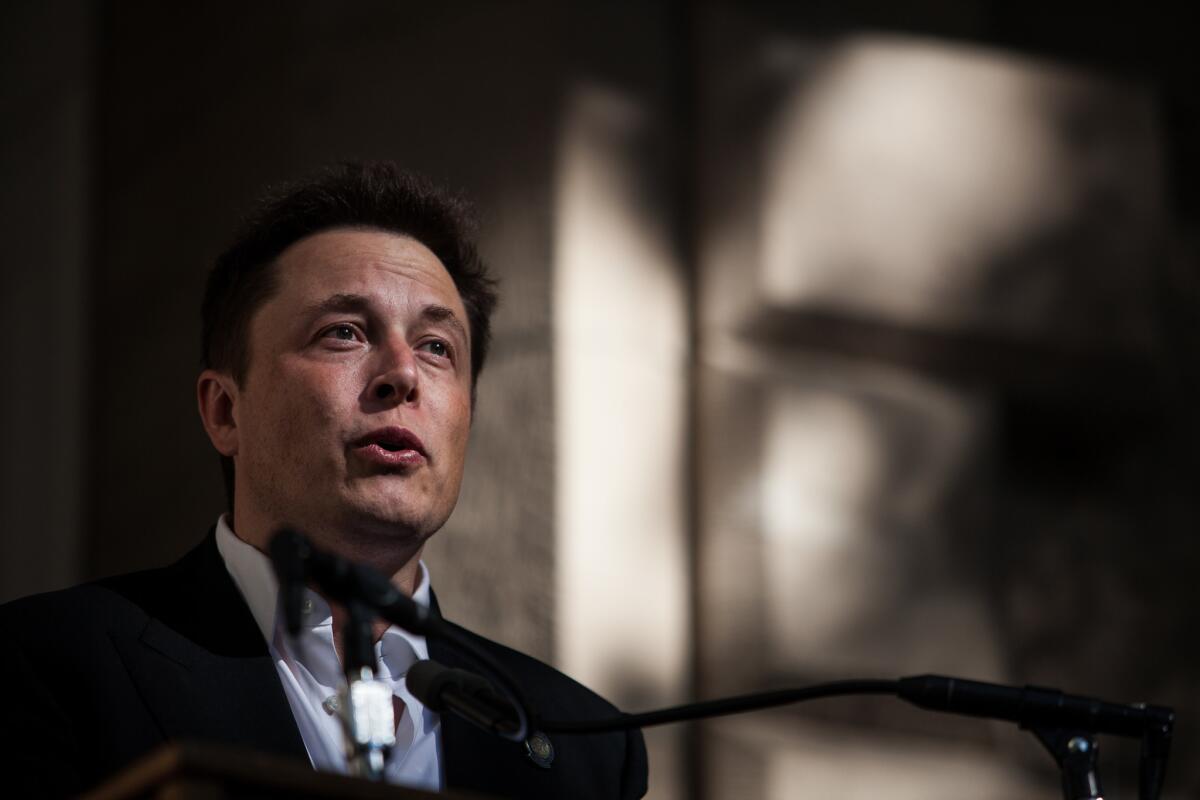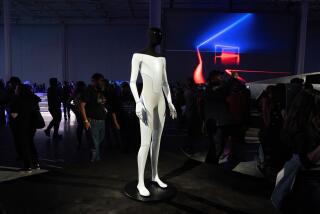Elon Musk’s master plan for Tesla is long on vision, short on specifics

You can’t call Elon Musk a short-term thinker.
His “Master Plan – Part Deux” paints a shimmering future-scape filled with driverless zero-emission cars, buses and trucks; a dramatic decline in vehicle fatalities; homes and businesses that draw power from the sun and store it in batteries for later use; and a new kind of factory: a “machine that builds the machine.”
Financial and market analysts would rather Musk focus on the immediate challenges Tesla Motors faces at the electric automobile company he runs — specifically, making sure the latest model, the Tesla 3, a $35,000 car that’s crucial to the company’s survival, goes on sale as planned late next year.
Yet, public-stock companies in the United States have long been criticized for their short-term quarter-to-quarter obsession with sales and profits. Whatever the master plan means for Tesla’s future, investors and executives in the clean energy industry are welcoming Musk’s latest missive.
The master plan, released as a blog post on Tesla’s site late Wednesday afternoon, lays out Tesla’s path beyond the Model 3, with plans for an electric cargo truck equipped with autonomous driving technology called Tesla Semi; a new-style electric bus, smaller than current models, capable of operating without a human driver; a pickup truck; a small SUV.
Also: An app to let Tesla owners rent out their otherwise idle automobiles. A new Uber-like ride-hailing service. Driverless technology that’s 10 times safer than today’s cars. And that machine that builds machines.
Plus: An all-in-one renewable energy package to combine rooftop solar power with a Tesla battery pack that can store energy to power a household during the night, recharge an electric vehicle, and pump excess energy back into the electrical grid. (A prospect that would become more seamless if Tesla succeeds in buying rooftop panel company SolarCity, Musk said.)
It all adds up to Musk’s quest not just for profit but for something grander: a sustainable energy without which “civilization will collapse.”
It’s an enthralling vision. It’s easy to see why clean energy investors love it.
“He’s the CEO of arguably the most influential clean energy company in the world,” said Ryan Popple, who runs Proterra, based near San Francisco in Burlingame. The company makes electric drive systems for mass transit buses. It’s “important to have someone like him say, ‘Here is a vision for the future, and here’s how it might work.’”
But the auto industry analysts have a point when they criticize the plan as mushy and vague — not just as a financial guidepost for a car company, but as a strategic manifesto.
“As is typical, Elon Musk has laid out a grandiose plan for the future with no time frames and few specifics and no mention of how and when Tesla will be profitiable,” said Michelle Krebs, senior analyst at Autotrader. The stock market shrugged off the plan, as Tesla shares fell 3% Thursday to close at $220.50.
The new vehicles — when might they be available for sale? Two years? Ten years? Musk isn’t saying. There’s not even a rough timeline. The trucks and buses will be “ready for unveiling” next year. As concepts? As prototypes? As production vehicles? That’s left unsaid.
Same for the vehicle sharing app and the ride-hailing fleet, both untethered to any timeline.
Musk – everybody who knows him calls him brilliant – lives in fact-based reality and pushes workers to “take it down to the physics” when they try to tell Musk why they can’t do what he wants done.
There are numbers in the master plan – yet they’re stated in isolation, with little context, and it’s not clear what they mean.
Autonomous vehicles 10 times safer than average. What’s safer? He’s trotted out statistics in the past that may or may not make his case. Why not here?
Worldwide regulatory approval for driverless cars won’t come until the 3 million miles of “fleet learning” turns into 6 million miles. When will that be?
A 5- to 10-fold improvement in auto production from the “machine that builds the machine.” What’s the metric? Something like vehicles per hour? He doesn’t say.
And what is a machine that builds a machine anyway? Musk has talked about this before but has never explained what he means. He does, however, state “the first Model 3 factory machine should be thought of as version 0.5, with version 1.0 probably in 2018.”
The first master plan Musk put together in 2006 was just as vague, if not more so. But it did contain a neat summary:
- Build sports car
- Use that money to build an affordable car
- Use that money to build an even more affordable car
- While doing above, also provide zero-emission electric power generation options
And he pretty much delivered. He turned out the Model S sedan and the Model X sport utility vehicle. And while $80,000 to $100,000 is hardly affordable to most, they’re selling better than almost anyone expected.
On the power front, his Gigafactory outside Reno is turning out battery storage units and soon will be producing battery cells for cars.
With Steve Jobs gone, Musk has emerged as perhaps the world’s most celebrated tech visionary. His success thus far at Tesla, and at SpaceX, where he’s winning NASA contracts away from traditional aerospace companies to rocket cargo into space, makes Part Deux more than some “wouldn’t it be cool” fantasy dreamed up in a smoke-filled dorm room.
Musk proposes a fascinating, if sketchily drawn, vision. He’ll be taken more seriously when he backs it up with clearer numbers, solid plans and timelines, and, eventually, execution.
And nothing will add more than to his credibility than a successful launch of the Model 3.







